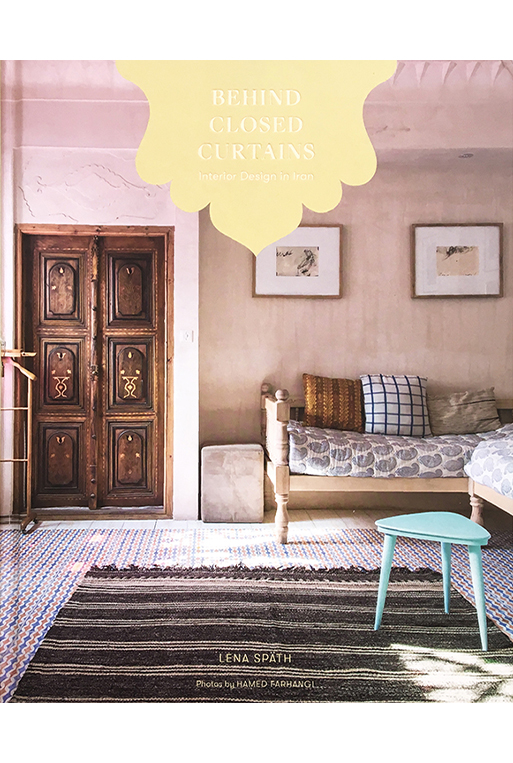
Behind Closed Curtains: Interior Design in Iran
Pedari Hotel (Khansar, Iran) is published in the book “Behind closed curtains: Interior design in Iran”- by Lena Späth 2017
The Fusion of Old and New
With around 70 percent of the population living in cities, there is often an urge to escape the noise and dust of Iranian streets. One of the places people have flown to is Khansar, a town three hours north of beautiful and historic Esfahan, known for honey, green fields, and tranquility. Whereas water shortage is an issue almost all over the country, here the rivers flow through lush green valleys, allowing their visitors to breathe.
With the goal to create a spatial experience for tourists while creating jobs for the locals, Mohammadreza Ghodousi renovated his grandfather’s house and added a new building in a minimalist style, hence the name Saraye Pedari, or father’s guesthouse. The new ensemble, with its white and cubic approach, represents the antagony to the Iranian classic architecture with its bright colors and detailed finishings. It hosts apartments and, through the usage of almost entirely white and light wood, guests can make the space their own. In contrast, the earlier garden house, dating back to the 1940s, mixes Iranian with European elements, a style repeated in the interior.
Something quite uncommon in the Iranian culture, but to be seen in the Saraye Pedari, are indoor plants. Houseplants have been a documented part of human existence since the days of the Egyptian pharaohs. Iran harbors one of the richest floras of the Near Eastern countries, even if more than two-third of the country’s surface consists of deserts, semi-deserts, and steppes. But it seems because of the focus on the famous Persian garden, Iranians prefer outdoor greenery or flower bouquets for special events over indoor plants, which didn’t become very popular until today.
Contrasting the modern amenities in the new building is the installation of a Korsi in the old, traditional way of heating in Iran. The most economical method was to burn charcoal in a brazier put under a small table and heat only one room. People then crawled underneath the large blanket that was put on top. It is still a common method in rural parts of the country and becoming popular with historic hotels catering to foreign tourists.
Mohammadreza co-founded the architectural office ZAV Architects in Tehran, which aims to incorporate socio-geographical research in their projects trying not to sabotage the neighborhood, nature, or other ecosystem. How successful this endeavour can be, one can see in the Father’s Guesthouse.
TEA POT (Samovar)
Being coffee drinkers until the 19th century, now every Iranian has one of these pots keeping tea warm. The Samovar consists of two parts, one for the tea on top and one for the hot water on the bottom. The tea pot made its way from Russia to Persia and today tea houses still carry the name Ghahvekhaneh (meaning coffee house in Farsi) while cafes serving coffee are using the English term coffee shop.
TRAY (Sini)
The tray is an important element in Persian culture. It is the way to find out if a girl is ready to get married; if she spills tea, it is said she isn’t. trays are often made of metal, wood, or paper mache and engraved or painted elaborately.
BALANCE WEIGHT (Vazn)
Already under Dariush The Great, around 500 BC, Persia developed a full system of standardized weights. Still, in the modern world, bazaar trades sometimes use an old balance scale and with its weights made of stone. Here, it serves as door stop.